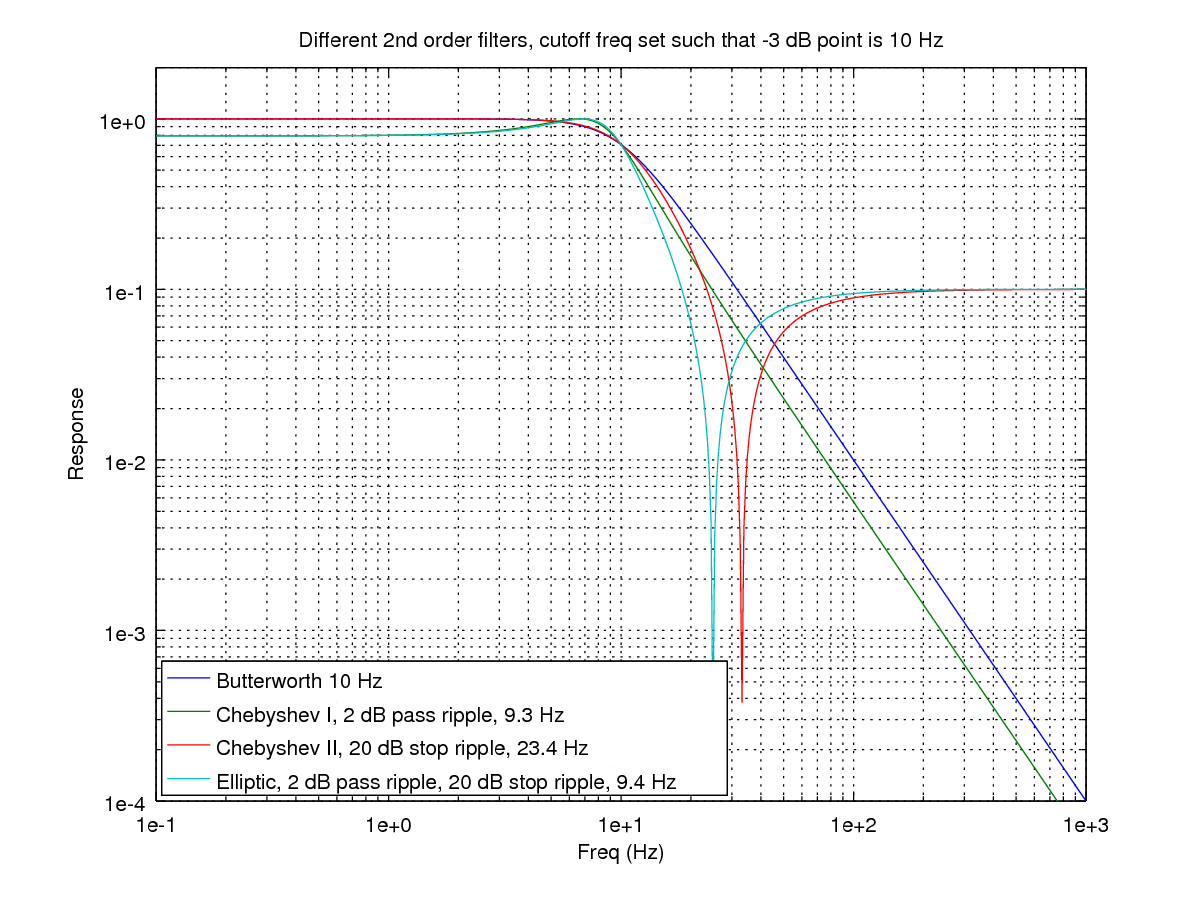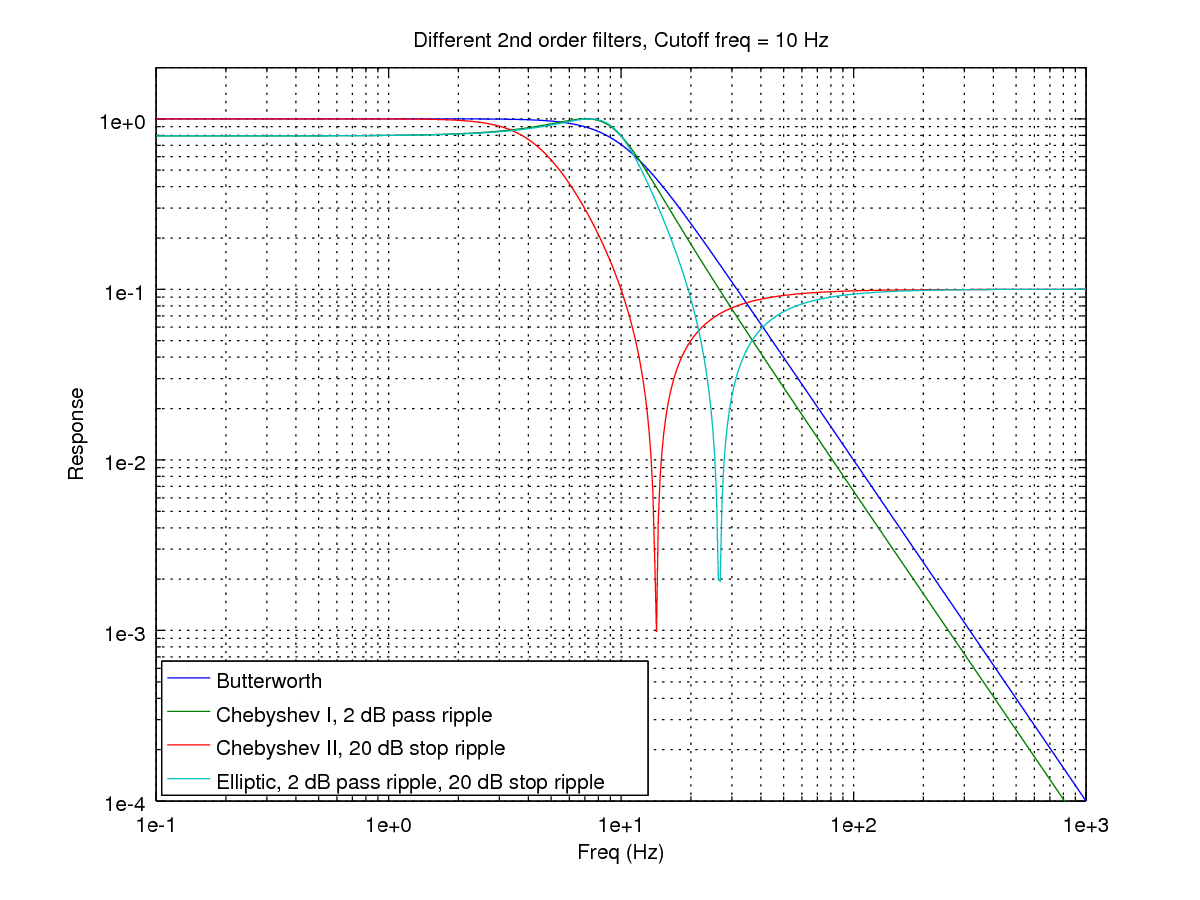 
|
The butterworth filter is maximally flat in the passband, but does not have a very sharp rolloff. The butterworth filter is an ``all-pole'' filter and it has a montonic frequency response (i.e. it keeps attenuating more and more as you go out in frequency, in constrast to say an elliptical filter, which reach some maximum attentuation and then stop). See figure 2
Personally, I use butterworth filters frequently in vibration analysis because they are the easiest to design. You specify a filter order and a cutoff frequency and Matlab can do the rest. In constrast, an elliptic filter design needs to specify the tradeoffs between attenuation and ripple. A lot of times I don't want to think about that, I just want to get rid of some high frequency noise in my signal.
 
|
